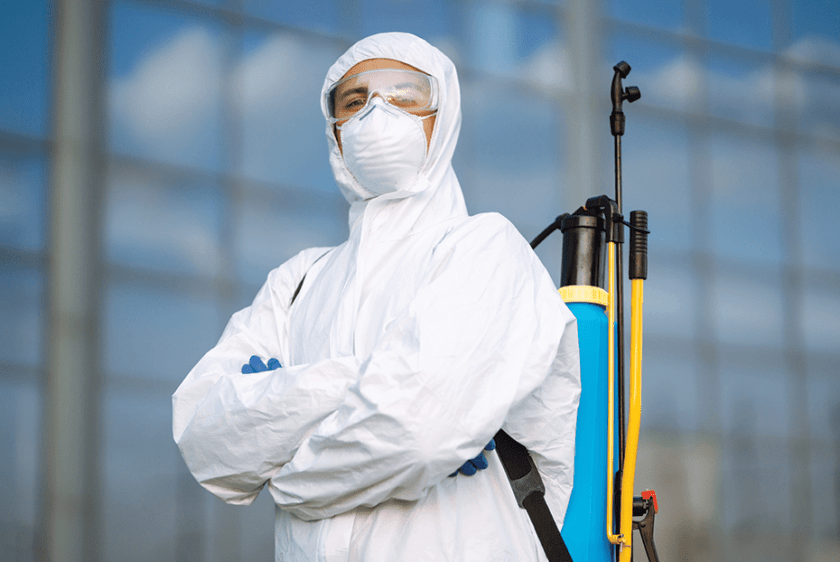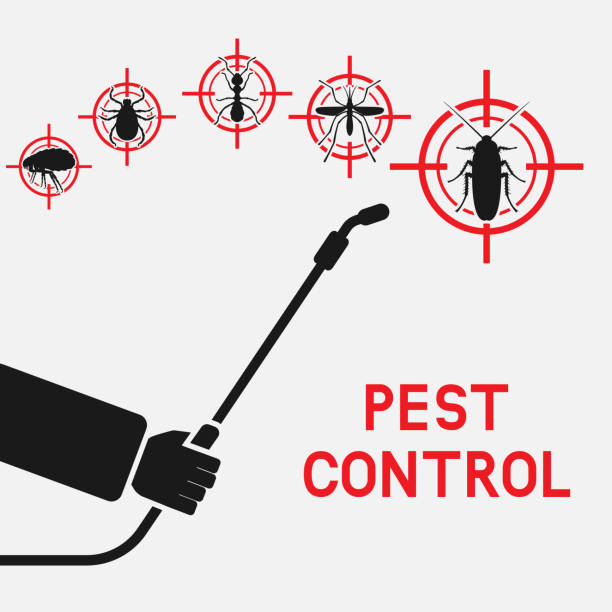Exploring Problem and Therapy Approaches in the World of Parasite Control
The landscape of bug control encompasses a myriad of obstacles, specifically as infestations of common home parasites remain to develop. Recognizing the actions and reproductive patterns of these problems is essential for developing efficient treatment strategies. By incorporating preventive measures with advanced management methods, such as Integrated Bug Management (IPM), property owners can better secure their settings. Nonetheless, the efficiency of these methods may differ considerably based on certain circumstances. What underlying elements add to the success or failure of these techniques in various settings?

Usual Home Pests
When it comes to handling our home, understanding typical house parasites is crucial. These insects not just interrupt our convenience however can also posture health threats and damages property. One of the most widespread home bugs consist of ants, cockroaches, rats, termites, and bed pests.
Ants, typically seen foraging in kitchens, can contaminate food and develop big nests. Rodents, including computer mice and rats, can cause structural damages and lug diseases like hantavirus and salmonella.
Recognizing the signs of these bugs, such as droppings, nests, or bite marks, is essential for very early treatment (Pest Control Lockhart). Appropriate sanitation methods, securing entry factors, and preserving a clutter-free environment work preventative actions. By identifying these common family insects and recognizing their behaviors, property owners can take proactive actions to mitigate problems, making certain a much healthier living atmosphere
Understanding Bug Infestations
Insect infestations can rise swiftly, turning a minor nuisance right into a substantial trouble if not attended to immediately. Typical elements contributing to problems include inadequate hygiene, architectural susceptabilities, and seasonal adjustments that drive insects inside.
Recognizing the kind of parasite is vital, as different varieties exhibit different habits and reproductive rates. Rodents may develop nests in hidden areas while bugs like cockroaches grow in damp environments. Early detection often depends upon recognizing signs such as droppings, munch marks, or unusual audios, which can indicate a problem prior to it becomes extreme.
Environmental problems likewise play a vital function in insect proliferation. Cozy, damp climates can help with the rapid development of pest populaces, while changes in landscaping or construction can accidentally produce favorable settings. Routine examinations and preventative steps are vital to mitigating the risk of infestations. An enlightened method to comprehending these characteristics prepares for effective parasite management methods in the future.
Treatment Methods and Strategies
Reliable therapy techniques and strategies are vital for reducing bug infestations and restoring a safe atmosphere. A diverse method is commonly best, integrating chemical, biological, and mechanical strategies tailored to the details parasite and the intensity of the invasion.
Chemical therapies consist of making use of insecticides and herbicides, which can successfully get rid of parasites. However, appropriate application and adherence to safety and security guidelines are essential to lessen threats to humans and non-target microorganisms. Integrated Parasite Management (IPM) motivates the judicious use of chemicals as a last hotel, relying instead on monitoring and limit degrees to determine intervention requirements.
Biological control approaches include introducing all-natural predators or parasites to minimize insect populations. This technique is increasingly preferred, specifically in agricultural setups, as it promotes environmental sustainability.
Mechanical approaches, such as catches and obstacles, offer immediate remedy for pests without presenting chemicals. Alternatives include sticky catches for insects or physical obstacles for rodents.
Inevitably, the choice of treatment approach should consider the specific parasite, the setting, and prospective influence on human health and ecosystems. A well balanced mix of these approaches can properly take care of invasions while advertising lasting insect control remedies.
Safety Nets for House
Proactively addressing pest problems before they intensify is important for keeping a healthy and balanced home setting (Pest Control Lockhart). Implementing effective safety nets can significantly reduce the chance of invasions, inevitably protecting both your property and wellness

Appropriate landscape design also plays a vital duty in avoidance. Keeping hedges and trees trimmed away from your house lowers the opportunities of parasites discovering their method indoors. Guarantee that water drainage systems are working successfully to protect against standing water, which can draw in mosquitoes and other insects.
Lastly, regular evaluations are advisable. Consistently examining for indicators of parasite activity here enables for early treatment. By embracing these safety nets, property owners can create a setting that is less congenial to bugs, therefore improving their total lifestyle and minimizing the demand for substantial anchor bug control interventions.
Business Pest Control Strategies
A detailed technique to commercial pest control is important for services intending to preserve a safe and sanitary atmosphere. Reliable strategies entail a mix of normal inspections, employee training, and the application of Integrated Pest Management (IPM) techniques.
Regular inspections make it possible for very early discovery of insect activity, enabling for timely intervention. Services need to establish a regular schedule for these assessments, focusing on risky areas such as cooking areas, storage space areas, and waste disposal sites. Worker training is just as vital; team must be educated on the signs of insect invasions and the importance of reporting them promptly.
Applying IPM practices assists reduce parasite issues sustainably. This includes environment modification, such as securing entry factors and minimizing clutter, as well as utilizing natural deterrents prior to turning to chemical treatments.

Moreover, working together with an accredited insect control supplier guarantees accessibility to professional expertise and advanced treatment options. This collaboration can cause personalized pest control intends tailored to the details demands of the organization, lessening threats and improving total efficiency. Inevitably, a positive and enlightened method fosters a pest-free environment, protecting both public health and business track record.
Verdict
In conclusion, efficient pest control requires a detailed understanding of usual household pests and see page their behaviors, paired with targeted treatment techniques. Executing preventive procedures along with therapy strategies such as Integrated Insect Monitoring and biological control enhances the ability to minimize infestations.